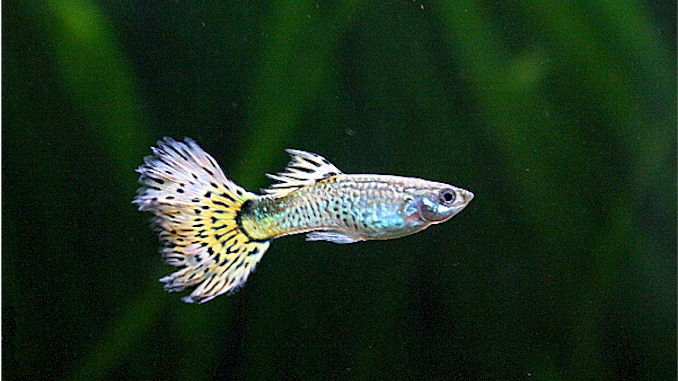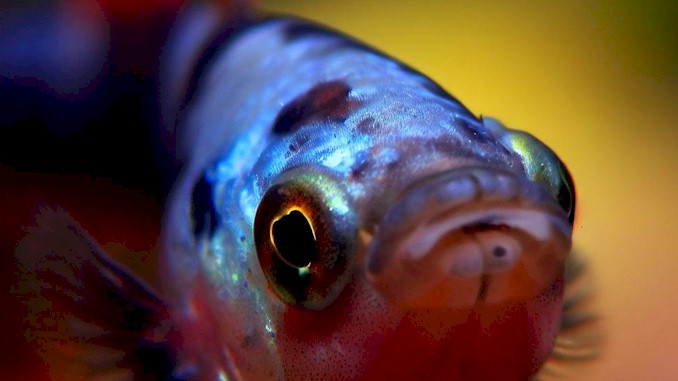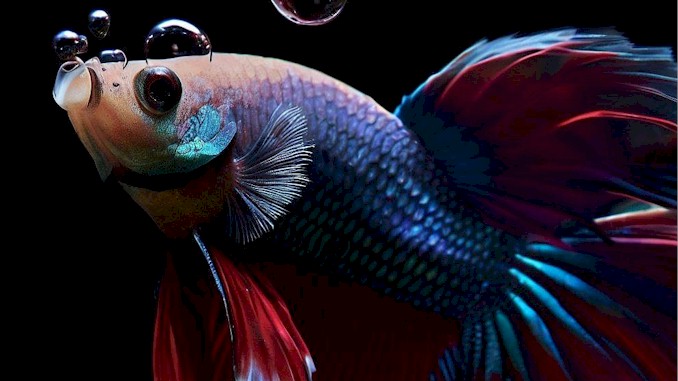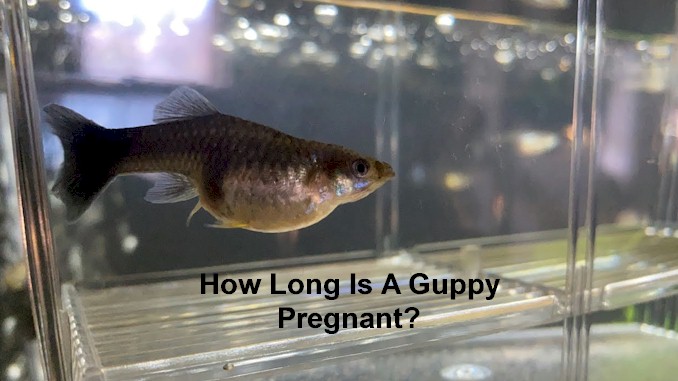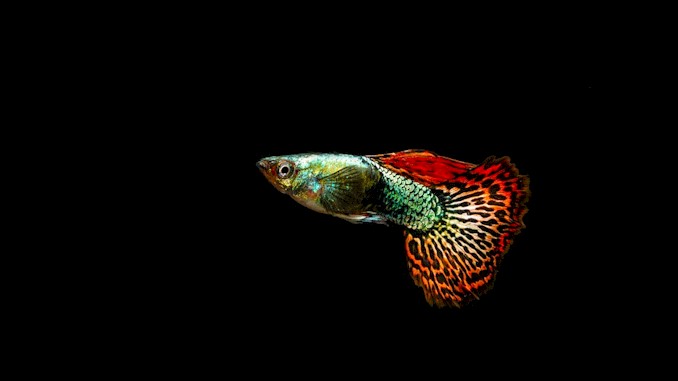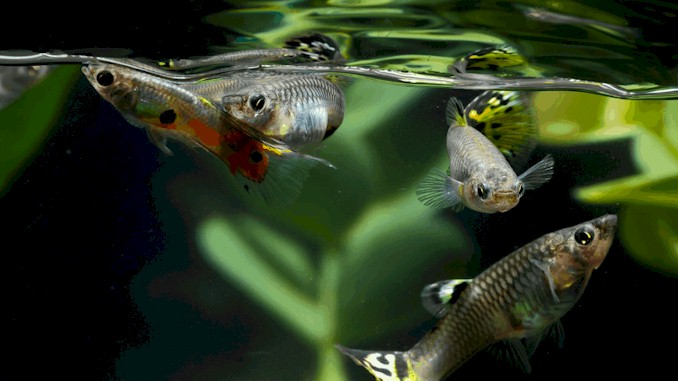Broken Beauty: Unveiling the Causes of Guppy Tail, Scale, and Fin Issues
Guppies possess a notable resilience, contributing to their immense popularity among fish enthusiasts. However, occasional occurrences of certain ailments can spark apprehension. Personally, I have observed instances where the guppies residing in my tank experience a peculiar phenomenon – the gradual deterioration of their tails, fins, and occasionally even scales. In order to address these conditions, I embarked upon a comprehensive exploration of the subject matter. Here, I shall share with you the knowledge I have acquired through this diligent investigation:
Guppies frequently lose external appendages such as fins, scales, and tails, which can be attributed to either direct accidents inside the tank or the aggressive conduct of a dominating tankmate who nibbles their fragile body parts. However, it is crucial to remember that such occurrences may be suggestive of an underlying disease, such as fin rot or scale shedding, which are frequently caused by bacterial infections hiding beneath the surface.
Within the scope of this post, I will explain the processes needed in properly resolving the condition of guppies that have lost these critical appendages. I will give you detailed instructions on how to cure serious conditions like fin rot and scale shedding, both of which have the ability to quickly spread and affect the entire aquatic environment.
Guppies and External Organ Loss: Unveiling the Causes
Guppies are beautiful fish with colorful tails, scales and fins that make them stand out in any aquarium. However, sometimes these external organs can get damaged or lost due to various reasons. This can affect your guppy’s appearance, health and behavior. In this section, I will explain the most common causes of external organ loss in guppies and how to recognize them.
Exploring the Natural Phenomenon
Guppies, those vibrant and captivating aquatic creatures, can occasionally experience the loss of their external organs, including fins, scales, and tails. Understanding the causes behind this phenomenon is crucial for fish keepers who strive to maintain the well-being of their guppy populations. While external organ loss may initially appear alarming, it is important to recognize that there are various factors at play.
One of the primary reasons for external organ loss in guppies stems from the natural interactions within their aquatic environment. These small and agile fish navigate through tanks filled with intricate decorations, plants, and even other tankmates. In their swift movements, guppies may inadvertently collide with tank objects, resulting in damage to their delicate fins or scales. This physical contact can lead to the gradual deterioration or even complete loss of these external appendages.
The Role of Aggressive Behavior
Another contributing factor to external organ loss in guppies is aggression displayed by tankmates. While guppies are generally peaceful and sociable, there may be instances where territorial disputes or bullying behavior arises, especially in densely populated tanks. Dominant or aggressive fish may exhibit fin-nipping tendencies, where they nibble at the fins or tails of other guppies. Such persistent attacks can cause significant damage over time, leading to the loss of these essential organs.
Furthermore, it’s essential to consider the impact of fin-nipping within guppy populations. In some instances, certain guppies may develop a propensity for fin-nipping, creating a cycle of harm within the tank. This behavior can result from stress, competition for resources, or even genetic predispositions. Identifying and addressing these underlying causes is crucial in preventing further external organ loss and promoting a harmonious tank environment.
Unveiling Underlying Ailments
While natural interactions and aggressive behavior account for a significant portion of external organ loss, it’s important to acknowledge the presence of underlying ailments that can exacerbate the condition. Two notable culprits are fin rot and scale shedding, both of which can lead to the deterioration and loss of fins, scales, and tails in guppies.
Fin rot, caused primarily by bacterial infections, can quickly spread throughout the fish’s body. It manifests as the degradation of the fins, starting from the edges and gradually progressing towards the base. If left untreated, fin rot can have detrimental consequences, including the complete loss of fins. Scale shedding, on the other hand, occurs when guppies shed their scales due to bacterial infections or underlying health issues. This process weakens their external protection, making them susceptible to further damage or loss of organs.
After you have learned the diverse causes behind external organ loss in guppies, you can implement appropriate measures to mitigate these issues. Whether it involves creating a tank environment that minimizes collisions, addressing aggression and fin-nipping behavior, or promptly treating underlying ailments, a comprehensive approach ensures the well-being and vitality of these captivating aquatic creatures.
Navigating Common Ailments: Insights into Fin Rot and Scale Shedding
Fin rot and scale shedding are common ailments that can affect guppies, causing distress to both the fish and their caretakers. Understanding the intricacies of these conditions is vital for effectively navigating their treatment and prevention. In this section, we will delve into the specifics of fin rot and scale shedding, providing you with detailed insights and actionable information to tackle these issues head-on.
Fin Rot—Unmasking the Culprit
Fin rot, also known as tail rot or fin erosion, is a prevalent bacterial infection that can wreak havoc on a guppy’s delicate fins. It is crucial to identify the signs of fin rot early on to prevent its progression and potential loss of fin tissue. Symptoms typically begin with fraying or discoloration of the fin edges, which may progress to a whitish or reddish hue. In severe cases, the fins may appear tattered or eroded, and the infection may even extend to the guppy’s body.
Various bacteria can be responsible for fin rot, including Aeromonas, Pseudomonas, and Flexibacter species. Poor water quality, inadequate tank maintenance, stress, or injuries can compromise a guppy’s immune system, making them more susceptible to these bacterial infections. It is essential to maintain optimal water parameters, including proper filtration, regular water changes, and a balanced diet, to minimize the risk of fin rot.
Treatment Approaches for Fin Rot
When addressing fin rot, a multi-faceted approach is necessary to combat the infection and promote healing. The first step is to ensure pristine water conditions. Regular water testing should be conducted to monitor ammonia, nitrite, nitrate levels, and pH. Ammonia and nitrite should ideally be undetectable, while nitrate levels should be kept below 20-30 parts per million (ppm).
Additionally, consider implementing a broad-spectrum antibiotic treatment specifically designed for fin rot, such as erythromycin or tetracycline. These medications can effectively combat the bacterial infection causing the fin rot. Follow the instructions carefully, and continue treatment for the prescribed duration to ensure complete eradication of the infection.
It is crucial to maintain a stress-free environment for the affected guppy during treatment. Reduce tankmate aggression, provide ample hiding spots and plants, and avoid overcrowding the tank. Supplementing the diet with immune-boosting foods, such as high-quality pellets, frozen or live foods rich in vitamins, can also aid in the recovery process.
Scale Shedding—Understanding the Process
Scale shedding, or exfoliation, is a natural phenomenon that occurs in guppies as part of their growth and development. It involves the shedding of old scales to make way for new ones. However, excessive or abnormal scale shedding can indicate an underlying issue that requires attention.
Excessive scale shedding can be triggered by various factors, including poor water quality, improper nutrition, stress, and certain diseases. Stressors such as sudden changes in water temperature, aggressive tankmates, or inadequate tank conditions can disrupt the guppy’s natural shedding process.
Addressing Scale Shedding
To address scale shedding, it is crucial to maintain optimal water quality and provide a well-balanced diet. Regular water changes, adequate filtration, and monitoring water parameters are essential. Nitrate levels should be kept in check, ideally below 20-30 ppm, to minimize stress on the guppies.
Providing a varied and nutrient-rich diet can help support healthy scale growth and minimize abnormal shedding. High-quality flakes, pellets, and frozen or live foods can offer a well-rounded nutritional profile. Supplementing their diet with foods rich in vitamins and minerals, such as daphnia, brine shrimp, or spirulina, can further support scale health.
If excessive scale shedding persists despite proper care, it is advisable to consult a veterinarian or an experienced aquatic specialist. They can conduct a thorough examination to identify any underlying diseases or conditions that may require targeted treatment.
As you familiarize yourself with the intricacies of fin rot and scale shedding, you can take proactive measures to prevent these common ailments and address them effectively if they arise. Remember, maintaining a clean and stress-free environment, along with a well-balanced diet, plays a pivotal role in preserving the health and vitality of your guppy population.
Protecting Your Aquarium Ecosystem: Treating and Preventing Infections
Maintaining a healthy and thriving aquarium ecosystem is essential for the well-being of your guppies. Infections, whether bacterial, fungal, or parasitic, can disrupt the balance of your tank and pose serious risks to your aquatic inhabitants. In this section, we will explore effective strategies to treat and prevent infections, ensuring the long-term health and vitality of your aquarium ecosystem.
Water Quality and Filtration
The foundation of a robust aquarium ecosystem lies in pristine water quality. Regular monitoring of water parameters such as ammonia, nitrite, nitrate, and pH is crucial. Ammonia and nitrite levels should be undetectable, while nitrate levels should be kept below 20-30 ppm. High ammonia and nitrite concentrations can stress and weaken your guppies’ immune systems, making them more susceptible to infections.
Proper filtration plays a vital role in maintaining water quality. Consider using a combination of mechanical, biological, and chemical filtration methods to effectively remove debris, toxins, and excess nutrients. Regular cleaning and maintenance of the filtration system, including replacing filter media as needed, are essential for optimal performance.
Quarantine and Acclimation
Introducing new fish or plants into your aquarium without proper quarantine and acclimation procedures can introduce potential pathogens and disrupt the delicate balance of your ecosystem. Before adding any new inhabitants, establish a separate quarantine tank where new arrivals can be observed and treated if necessary.
Quarantine periods can vary depending on the duration and intensity of observation required, but a general guideline is a minimum of two weeks. During this time, closely monitor the health and behavior of the quarantined fish, looking for any signs of infection or abnormality. If any issues arise, appropriate treatments can be administered without risking the health of the entire aquarium ecosystem.
When acclimating new fish to your main tank, utilize proper drip acclimation methods to ensure a smooth transition. Sudden changes in water parameters, such as temperature or pH, can stress the fish and compromise their immune systems, making them more susceptible to infections.
Disease Identification and Treatment
Prompt identification and treatment of infections are crucial to prevent their spread and minimize their impact on your guppies and aquarium ecosystem. Familiarize yourself with common symptoms of bacterial, fungal, and parasitic infections, such as changes in behavior, appetite, physical appearance, or the presence of visible lesions or abnormal growths.
When an infection is suspected, it is crucial to promptly isolate the affected fish and seek appropriate treatment. Depending on the type of infection, treatments may include antibiotics, antifungal medications, or specific parasitic treatments. Follow the instructions provided by reputable manufacturers or consult with a veterinarian or aquatic specialist for guidance on proper dosage and duration of treatment.
Prevention Strategies
Preventing infections is always preferable to treating them. Implementing preventive measures can significantly reduce the risk of infections in your aquarium ecosystem. Here are some key strategies to consider:
- Quarantine: As mentioned earlier, quarantine new arrivals before introducing them to the main tank.
- Proper Nutrition: Provide a well-balanced diet to ensure your guppies receive essential nutrients and maintain a robust immune system. Avoid overfeeding, as excess food can lead to water quality issues.
- Tank Maintenance: Regularly clean your tank, remove debris, and perform routine water changes to maintain optimal water quality.
- Stress Reduction: Minimize stressors such as sudden temperature fluctuations, aggressive tankmates, or overcrowding. Provide ample hiding spots and create a peaceful environment for your guppies.
- Hygiene Practices: Practice good hygiene when working with your aquarium. Avoid cross-contamination between tanks and ensure your hands, nets, and equipment are clean before interacting with the aquarium.
You can preserve the fragile environment of your aquarium and the well-being of your guppies by putting these preventive measures into place and responding quickly to diseases when they arise. An aquatic environment that is healthy and free of illness will be possible with regular monitoring, appropriate treatment, and a proactive attitude.
Restoring Vitality: Effective Remedies for Guppies’ Lost Organs
The loss of external organs, such as fins, scales, and tails, can be distressing for guppies and their caretakers. However, there are remedies available to help restore vitality and promote healing in these resilient aquatic creatures. In this section, we will explore effective remedies that can aid in the recovery of guppies’ lost organs, allowing them to regain their natural beauty and functionality.
Creating a Healing Environment
Creating an optimal healing environment is essential for guppies recovering from organ loss. Start by ensuring pristine water conditions, maintaining appropriate temperature, pH, and water quality parameters. A well-maintained tank provides a stress-free environment that promotes healing.
Consider providing additional hiding spots and plants in the tank to create a sense of security for the affected guppies. These structures offer protection and minimize stress levels, allowing the fish to focus on regenerating lost organs.
Balanced Nutrition for Regrowth
Proper nutrition plays a vital role in supporting organ regeneration and overall health in guppies. Ensure your guppies are receiving a well-balanced diet that provides essential nutrients for tissue growth and repair. High-quality pellets, flakes, and frozen or live foods can offer a varied nutritional profile.
Supplement their diet with foods rich in protein, vitamins, and minerals. These nutrients are crucial for promoting tissue regeneration and strengthening the immune system. Consider feeding foods such as bloodworms, brine shrimp, daphnia, and spirulina, which are rich in these essential nutrients.
Medications and Treatments
In some cases, specific medications or treatments may be necessary to aid in the healing and regrowth of lost organs in guppies. Here are some commonly used remedies:
- Melafix: Melafix is an all-natural medication derived from tea tree oil. It helps promote tissue regeneration and aids in the healing of wounds and infections. Follow the instructions provided by the manufacturer for proper dosage and application.
- Aquarium Salt: The use of aquarium salt can be beneficial in promoting healing and preventing infections. It creates a mildly saline environment that helps reduce stress, aids in osmoregulation, and can have antibacterial properties. Use aquarium salt as directed, and monitor the guppies’ response to ensure they tolerate it well.
- Antibiotics: If the loss of organs is due to bacterial infections, your veterinarian or aquatic specialist may prescribe antibiotics specifically designed for aquatic use. Follow the prescribed dosage and treatment duration carefully to combat the infection effectively.
Patience and Monitoring
Regrowth of lost organs in guppies is a gradual process that requires patience. It is essential to monitor the affected fish closely and observe any signs of improvement or complications. Regeneration rates may vary depending on the extent of the damage and the overall health of the guppy.
Regular water parameter monitoring and maintenance are crucial during the recovery process. Ensure that ammonia, nitrite, and nitrate levels are within appropriate ranges to avoid further stress on the fish. Additionally, maintaining optimal water quality aids in preventing secondary infections and promotes overall healing.
You may substantially improve the regeneration and healing process for guppies who have lost their organs by following these cures and providing a supportive atmosphere. These hardy species may restore their vitality with time, care, and attention, displaying their inherent beauty and functioning once again.
Maintaining Optimal Tank Health: Strategies for Long-Term Wellness
Ensuring the long-term wellness of your guppies and maintaining optimal tank health are vital for their overall health and happiness. By implementing effective strategies and adhering to proper maintenance routines, you can create a thriving and balanced aquarium environment. In this section, we will explore various strategies and practices that will help you achieve and maintain optimal tank health for the long term.
Water Quality Management
Water quality is of paramount importance in maintaining a healthy aquarium. Regular monitoring and management of water parameters are essential. Test the water regularly for ammonia, nitrite, nitrate, pH, and other relevant parameters to ensure they are within the appropriate ranges for guppy health.
Perform routine water changes to remove accumulated waste, toxins, and excess nutrients. Aim to replace 10-20% of the tank water every one to two weeks. This practice helps maintain stable water conditions and prevents the buildup of harmful substances.
Invest in a reliable filtration system that provides both mechanical and biological filtration. Mechanical filtration removes debris and particulate matter, while biological filtration promotes the growth of beneficial bacteria that help break down harmful substances. Clean or replace filter media regularly to ensure optimal filtration efficiency.
Regular Maintenance Tasks
To maintain optimal tank health, several regular maintenance tasks should be performed:
- Cleaning: Regularly clean the tank and its components to remove algae, debris, and any buildup. Use appropriate cleaning tools, such as algae scrapers and brushes, to clean the tank walls, decorations, and equipment.
- Gravel Vacuuming: Use a gravel vacuum to remove accumulated waste and uneaten food from the substrate. This helps prevent the release of harmful substances and maintains water quality.
- Equipment Inspection: Regularly inspect all equipment, including filters, heaters, and air pumps, to ensure they are functioning correctly. Replace or repair any faulty equipment promptly.
- Plant Maintenance: If you have live plants in your aquarium, trim them as needed and remove any dead or decaying plant material. This prevents the buildup of organic matter and helps maintain water quality.
Stocking and Tankmate Selection
Proper stocking and tankmate selection play a crucial role in maintaining a harmonious and healthy tank environment. Avoid overstocking the tank, as overcrowding can lead to increased waste production and higher stress levels among the fish.
Research and choose tankmates that are compatible with guppies in terms of water parameter requirements, behavior, and size. Aggressive or fin-nipping species should be avoided to prevent stress and potential harm to the guppies.
Balanced Feeding Regimen
Maintaining a balanced feeding regimen is essential for the overall health and well-being of your guppies. Overfeeding can lead to poor water quality and health issues, while underfeeding can result in malnutrition and weakened immune systems.
Feed your guppies a varied diet that includes high-quality commercial pellets, flakes, and frozen or live foods. Offer an appropriate portion size that the guppies can consume within a few minutes. Monitor their feeding behavior and adjust the quantity accordingly.
Observation and Prompt Action
Regular observation of your guppies is crucial for detecting any signs of illness, stress, or abnormal behavior. Monitor their appetite, swimming patterns, fin condition, and overall appearance. Any changes in behavior or physical appearance should be investigated and addressed promptly.
If you notice any signs of disease or distress, take immediate action. Isolate affected fish, perform necessary water quality tests, and consult with a veterinarian or aquatic specialist for guidance on appropriate treatment options.
You can maintain optimal tank health and create a happy and peaceful environment for your guppies by applying these methods and keeping to correct maintenance procedures. Regular monitoring, water quality control, and proper fishkeeping techniques will all contribute to your aquatic friends’ long-term health and enjoyment.

